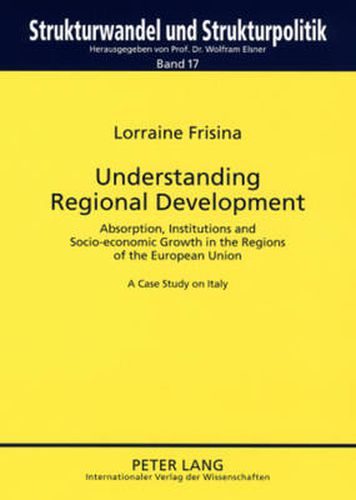Readings Newsletter
Become a Readings Member to make your shopping experience even easier.
Sign in or sign up for free!
You’re not far away from qualifying for FREE standard shipping within Australia
You’ve qualified for FREE standard shipping within Australia
The cart is loading…






This book explores the efficacy of costly redistributive measures taken by the European Union in the form of structural funding within the context of Italian regional development. It addresses divergent outcomes in socio-economic growth observed between the Center-North and Mezzogiorno regions in light of Structural Fund allocations assigned during the last two distribution periods (years 1994-2000 and 2000-2006). In doing so, the study establishes that performance outcomes fail to correspond with patterns in funding, as the Mezzogiorno, despite receiving up to three times the amount of structural funding than its Center-Northern counterpart, has yet to realize the same degree of growth (whether in absolute terms or trends in performance), thereby indicating the role of non-financial factors in influencing development. The author develops a novel model of regional absorption that weds assumptions derived from absorption literature concerning the role of administrative capacity and rent seeking, with the economic institutionalism of Douglass C. North (1990), particularly his transaction cost theory of exchange. The application of this model to two representative case studies, Tuscany and Sardinia, affirms the necessity in bolstering administrative capacity while curbing rent seeking within regional institutions as a means of lowering transaction costs and thereby increasing the productive absorption of Structural Funds. The book bridges political and economic approaches to understanding the issue of regional development.
$9.00 standard shipping within Australia
FREE standard shipping within Australia for orders over $100.00
Express & International shipping calculated at checkout
This book explores the efficacy of costly redistributive measures taken by the European Union in the form of structural funding within the context of Italian regional development. It addresses divergent outcomes in socio-economic growth observed between the Center-North and Mezzogiorno regions in light of Structural Fund allocations assigned during the last two distribution periods (years 1994-2000 and 2000-2006). In doing so, the study establishes that performance outcomes fail to correspond with patterns in funding, as the Mezzogiorno, despite receiving up to three times the amount of structural funding than its Center-Northern counterpart, has yet to realize the same degree of growth (whether in absolute terms or trends in performance), thereby indicating the role of non-financial factors in influencing development. The author develops a novel model of regional absorption that weds assumptions derived from absorption literature concerning the role of administrative capacity and rent seeking, with the economic institutionalism of Douglass C. North (1990), particularly his transaction cost theory of exchange. The application of this model to two representative case studies, Tuscany and Sardinia, affirms the necessity in bolstering administrative capacity while curbing rent seeking within regional institutions as a means of lowering transaction costs and thereby increasing the productive absorption of Structural Funds. The book bridges political and economic approaches to understanding the issue of regional development.